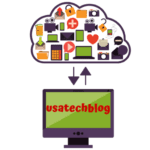In today’s rapidly evolving security landscape, traditional visitor management methods are replaced by more sophisticated and efficient systems. Gone are the days of simple sign-in sheets and manual record-keeping. Modern security demands a proactive approach to visitor management, leveraging technology to enhance safety and streamline processes.
From biometric scanners to cloud-based databases, the evolution of visitor management systems has been remarkable. The use of biometric scanners has been increasing exponentially. According to Precedence Research, the US biometrics market size is expected to grow at a CAGR above 20%. It is expected to reach $64.09 billion by 2033.
This article explores the evolution of visitor management systems. It highlights key innovations and their impact on security protocols.
The Rise of Digital Visitor Management Systems
Historically, visitor management involved little more than a logbook and a receptionist. However, as security threats became more complex, organizations began to recognize the limitations of these manual processes.
The first wave of digital visitor management systems emerged in the late 20th century, offering features such as electronic sign-in, badge printing, and basic record-keeping. While an improvement over paper-based methods, these early systems lacked integration with other security measures and were often cumbersome.
With technical advances, visitor management systems have now become even more customizable to user liking. According to Greetly, a visitor management system’s interface can be easily customized. This makes them user-friendly, as you can tailor them based on your target audience or visitors. For example, if your visitors are generally visually impaired, you can make the font of self-help registration systems bigger and bolder.
Moreover, today’s tools have several added features for comprehensive security. For one, a visitor management system can make pre-appointment confirmations, give temporary access control, and enable nondisclosure agreement acknowledgment and signatures.
How Visitor Management Systems Have Evolved
Visitor Management Systems (VMS) have indeed come a long way, evolving significantly over the years to meet the changing needs of organizations. Here’s a look at how they’ve evolved:
Integration with Access Control
Access control systems are essential for regulating entry and exit to physical spaces. Therefore, the need and demand for these tools are growing constantly. According to MarketsandMarkets, the access control market has the potential to grow at a CAGR of 7.8% till 2029. This can make the market reach $15.2 billion by the end of the forecast period.
However, as security threats evolved, the need for tighter integration between visitor management and access control became apparent. When used alone, access control systems have some limitations. For instance, they offer limited authentication methods, such as PIN codes, key cards, or biometrics.
Modern visitor management systems seamlessly integrate with access control systems to overcome such issues. For example, they can streamline visitor authentication through pre-registration, identity verification, and issuing temporary access credentials. This allows organizations to enforce policies such as badge authentication and temporary access permissions.
This integration enhances security and provides a more seamless experience for visitors who no longer need to navigate multiple checkpoints.
The Role of Biometrics
Biometric technology has revolutionized visitor management, offering higher security and convenience. Biometric scanners can authenticate visitors based on unique physiological traits such as fingerprints, facial features, or iris patterns. This eliminates the need for physical badges or access cards, reducing the risk of unauthorized access due to lost or stolen credentials.
Biometric visitor management systems also provide real-time authentication, allowing security personnel to quickly identify potential threats. The use of biometrics can also be scaled not only for visitors but also for employees. For instance, employers can use it to log employees’ work hours.
Cloud-Based Solutions
Cloud computing solutions have become a go-to option for many businesses trying to leverage modern-day technologies. Although this technology has long existed, its wide adoption started only a few years ago. Moreover, the pandemic gave cloud computing adoption a significant push, as companies had to operate remotely.
While many chose cloud computing to continue operations during the pandemic, they continue using it. According to a Google Cloud report, 41.4% of global tech and business leaders plan to increase their investment in cloud computing.
Cloud computing has further transformed visitor management, allowing organizations to access and manage visitor data from anywhere with an internet connection. Cloud-based visitor management systems offer scalability, flexibility, and enhanced security compared to on-premises solutions.
They also facilitate seamless integration with cloud-based security tools like video surveillance and threat detection systems. Additionally, cloud-based systems enable organizations to analyze visitor data more effectively, identifying patterns and trends that may indicate security risks.
Mobile Applications
Mobile technology has profoundly impacted visitor management, enabling organizations to digitize the entire visitor experience. Smartphones make your visitor management system accessible to anyone for pre-registration use. According to Pew Research, around 97% of Americans will own a cell phone in 2024. Moreover, 9 in 10 of them have a smartphone.
Mobile applications allow visitors to pre-register for visits, upload IDs, and receive digital badges or QR codes that grant access upon arrival. These apps also provide real-time notifications and updates, keeping visitors informed throughout their visit. From a security perspective, mobile applications enhance visibility and control, allowing security personnel to monitor and manage visitor activity remotely.
Frequently Asked Questions
Are Visitor Management Systems Suitable for All Types of Organizations?
Yes, visitor management systems can be tailored to meet the needs of various industries, including corporate offices, healthcare facilities, educational institutions, and government agencies.
How Do Biometric Visitor Management Systems Address Privacy Concerns?
Biometric data is encrypted and stored securely, with access restricted to authorized personnel. Visitors’ biometric information is typically stored locally on the device and not shared with third parties.
Can Visitor Management Systems Integrate With Existing Security Infrastructure?
Modern visitor management systems are designed to integrate seamlessly with access control systems, surveillance cameras, and other security technologies.
What Are the Benefits of Using a Cloud-Based Visitor Management System?
Cloud-based systems offer scalability, flexibility, and enhanced security compared to on-premises solutions. They also enable organizations to access and manage visitor data from anywhere with an internet connection.
To conclude, the evolution of visitor management systems reflects the ongoing effort to adapt to emerging security challenges. From digital sign-in sheets to biometric authentication, these systems’ capabilities have expanded dramatically in recent years.
As organizations continue to prioritize safety and efficiency, the role of visitor management will only become more critical. By embracing innovation and leveraging technology, organizations can enhance security protocols while providing a seamless experience for visitors.

